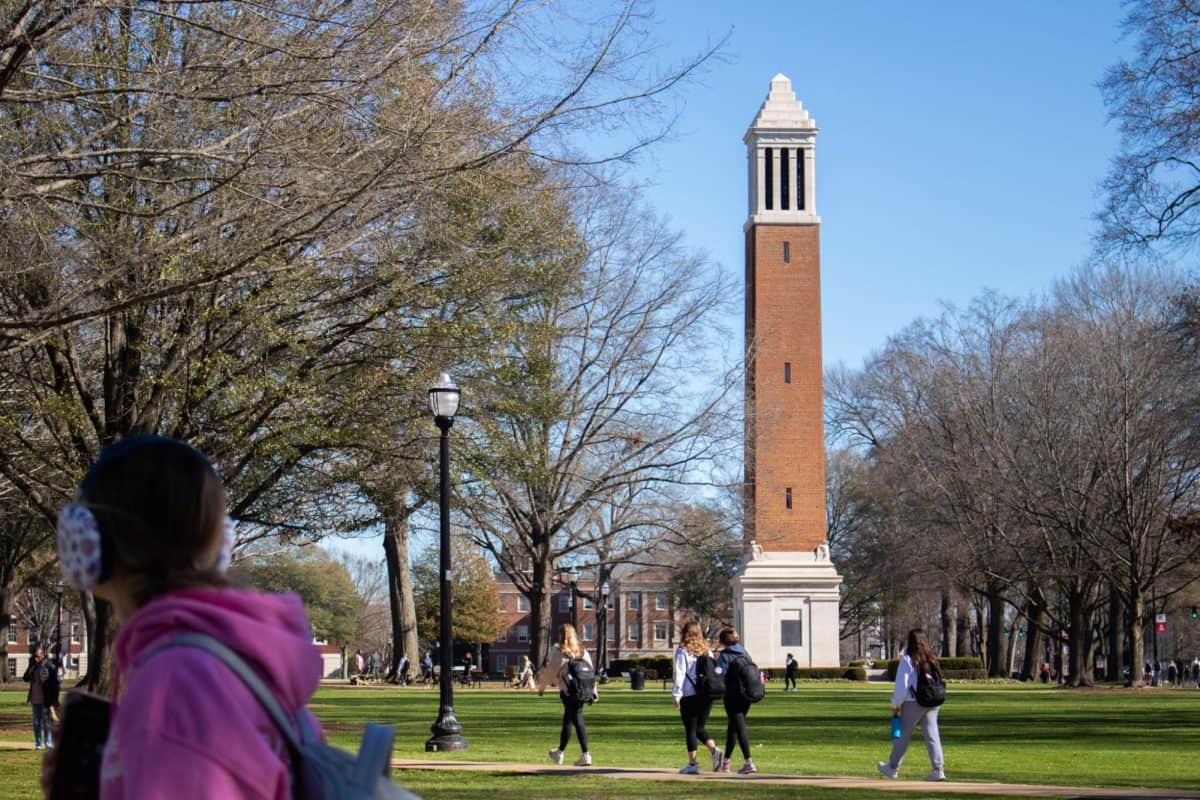U.S. colleges and universities should stop requiring standardized testing in admissions, placement and merit-scholarship decisions in order to receive federal funds.
As noted by Jon Boeckenstedt, the current vice provost of enrollment management at Oregon State University, standardized test scores add about as much predictive power to admissions data as a student’s zodiac sign.
A 2020 study published by the American Educational Research Association found that a high school student’s GPA is five times better at predicting college graduation than their ACT score. No matter how much the College Board and the ACT would like you to believe otherwise, these tests aren’t reliable indicators of how students will perform in college.
Beyond being unreliable, using standardized tests in admissions, placement and merit-scholarship decisions harms students whose scores do not reflect their true academic prowess.
Back in 2014, Nikole Hannah-Jones documented the story of D’Leisha Dent, then a student at Tuscaloosa’s Central High School, in an article for The Atlantic. Dent was homecoming queen, a celebrated athlete, class president and a leading student in her high school class, but was denied many postsecondary opportunities because of her meager ACT score.
By preventing some extremely capable students, like Dent, from attending a college or university that would actually help them to succeed, misrepresentative standardized tests block these students from reaching their academic potential and obstruct their right to flourish.
Standardized testing has also been shown to discriminate along racial and class lines. In particular, the SAT has a history of being biased toward wealthier, white populations.
In the early 2000s, Roy O. Freedle discovered that the “common words” used in some questions had different meanings for different demographics. These words’ intended connotations were almost always more easily interpreted by white students than their Black counterparts. A 2010 article in the Harvard Educational Review corroborated Freedle’s findings with an updated study.
Indeed, standardized testing heavily favors students from more privileged socioeconomic backgrounds.
Dent didn’t perform poorly on her ACT because she was a bad student, quite the contrary: Dent was a skilled student who struggled to succeed at standardized testing because her predominantly Black high school was underfunded by the city of Tuscaloosa.
Due to their race and their class, Dent and her classmates were deprived of the resources needed to do well on the ACT. Students from wealthier families can afford outside test prep and multiple test attempts, making their chances of receiving a college-worthy score far greater than those of equally apt students from poorer backgrounds.
This is all in addition to the detrimental effect that poverty and unsafe living conditions — systemic issues faced disproportionately by Black and Latino Americans — have been shown to deal to students’ educational outcomes. Research has found that significant gaps in household resources, parenting time and various stressors create a gap in educational achievement for children of different racial and ethnic backgrounds before they even begin school.
Due to these disparities, standardized testing perpetuates socioeconomic inequalities and gives wealthier white students precedence in admissions, placement and merit-scholarship decisions over their already disadvantaged counterparts.
Now, it is important to note that socioeconomic inequities influence more than just a student’s test score. GPA, essay quality, extracurricular involvement, and other aspects of an individual’s academic portfolio are all touched by the same disparities revealed by standardized testing.
These disparities speak to much larger issues of racial injustice, inequality and cyclical poverty that must be addressed with sweeping institutional reform — not simply a reworking of college admissions. Although these other measures are by no means perfect, no measure can be in a fundamentally unfair society.
But standardized tests not only bias applications in favor of wealthier, whiter students; they also lack any minutiae that could speak to the adversities that a student has faced, their career ambitions, or how they perform outside of a high-stress testing environment.
More qualitative metrics, like personal statements or letters of recommendation, are far better suited to give a holistic impression of a student’s background and abilities.
The COVID-19 pandemic forced many schools to go test-optional and students have only gained more flexibility in their academic futures.
Even postgraduate standardized tests like the GRE are seeing declining levels of requirement and participation, because educational institutions have finally begun to recognize the reality that no single test score is indicative of a student’s true ability to succeed. The more nuanced portrait of a student’s academic strength is captured over a yearslong course of schooling, not a handful of high-stress testing sessions.
These tests do not allow all students to flourish. They misrepresent certain students’ abilities and prevent them from attending schools where they would actually find success.
They also perpetuate inequality through racial and economic biases that exist within the test and testing process. This is why many colleges have already begun to remove standardized tests from admissions, placement and merit-scholarship decisions.
The University of California system is one of the main pioneers of this effort, with UCLA professor Sylvia Hurtado citing the benefit that eliminating testing has had for all students: “All racial and ethnic groups benefited with increases in admissions. Not only were more eligible students identified, campuses also became more selective by using a wide range of criteria to identify talent in holistic review processes.”
The rest of higher education should heed these words and leave standardized testing in the past.







